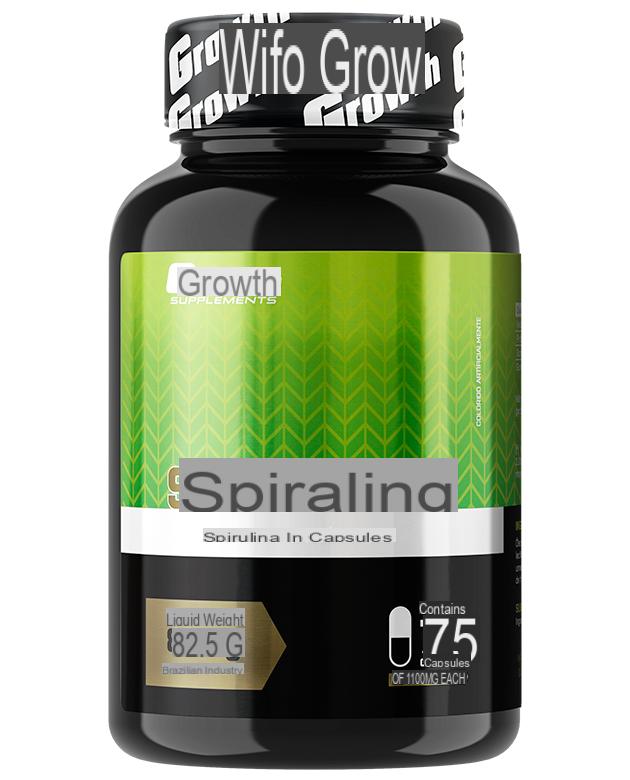
Spirulina is an alga that grows in salt lakes with alkaline waters rich in mineral salts.
This blue-green alga needs high temperatures that are between 30 and 40 degrees to live.
In the rare waters where these particular conditions exist, spirulina develops and is collected to be used for curative purposes.
His knowledge is already centuries old; in fact in Mexico the people of the Aztecs used it for its beneficial properties and prepared natural remedies as regenerating drinks.
Its scientific name is arthrospira platensis and is part of the microalgae of the cyanobacteria genus, capable of consuming carbon dioxide and releasing oxygen thanks to the energy they take from the sun. These cyanobacteria they are very ancient and played a central role when the atmosphere and the air that we still breathe today was created at the origins of the formation of the Earth.
Composition of spirulina
Spirulina is considered a superfood because it has a composition of nutrients and beneficial substances that is truly unmatched.
Spirulina is first and foremost a lot rich in vegetable proteins: contains all 8 essential amino acids. Its protein content is even better than eggs, milk, fish, meat and soy.
It also contains essential fatty acids such as linolenic acid (omega 3) and linoleic (omega 3) important for regulating fats.
Spirulina is also rich in vitamins A, C, D, E, K and in particular of group B (B1, B2, B3). Inside we can also find a pseudovitamin of B12 which, however, seems not to be active in the body, for this reason spirulina it cannot be considered a reliable and safe source of vitamin B12.
Finally it is considered a natural tonic as it contains many mineral salts such as iron, calcium and magnesium and also micro minerals such as manganese, chromium, copper, zinc and selenium. Spirulina is low in sodium and iodine, another advantage for those who have to follow a low-sodium diet or have thyroid problems.
Read also Spirulina, dosage and benefits >>
The properties of the spirulina algae
Its richness in proteins, vitamins and minerals make it spiriulina an energizer, a tonic and a remineralizer highly effective, for this reason it is excellent for any age as well as for sportsmen and for those who choose a vegetarian and vegan diet.
Has a low calorific value and therefore also used for those who undertake slimming diets, also having a satiating power quite high. Even during pregnancy and breastfeeding it can be of help to new mothers although it is always advisable to consult your doctor before taking it.
Spirulina can be considered the natural supplement par excellence, useful in all those cases where there are nutrient deficiencies. Just to give an idea of the proportion, for example the iron content is 34 times higher than that of spinach.
Spirulina, containing vitamin C, vitamin E and beta-carotene, precursor of vitamin A, is an exceptional antioxidant; is therefore capable of counteract free radicals and prevent the damage of aging.
Furthermore, each vitamin carries with it its properties: giving only two examples, vitamin C a stimulates the production of white blood cells and collagen for the skin, and is essential for the absorption of iron, instead the presence of vitamin E makes the spirulina capable of activating the immune system and supporting the vascular one.
It is not for nothing that spirulina is useful for prevent cardiovascular disease also thanks to the presence of essential omega 3 and 6 fatty acids: the linoleic acid present in spirulina is a blood thinner with high anti-inflammatory power and is also capable of reducing cholesterol levels; at the same time, the omega 6s act on the control of cholesterol values by lowering bad cholesterol (LDL) and rebalancing the percentage of triglycerides in the blood.
Spirulina dosage
Spirulina is usually sold dried and pulverized in the form of tablets or in free powder to be diluted in water or other beverage.
The dosage must not be less than one gram because below it has no effect; the recommended dose is 5 grams per day. Usually at the beginning they take 2 grams and gradually increase up to the 5 gram threshold. This dose should not be exceeded also to avoid any contraindications.
It is a good idea to read the product label and always look for a certified production chain in order to have more guarantee of the quality of this natural supplement.
To learn more:
> Spirulina Algae: find out more about its uses and properties
> Spirulina and thyroid, how to take it safely


























